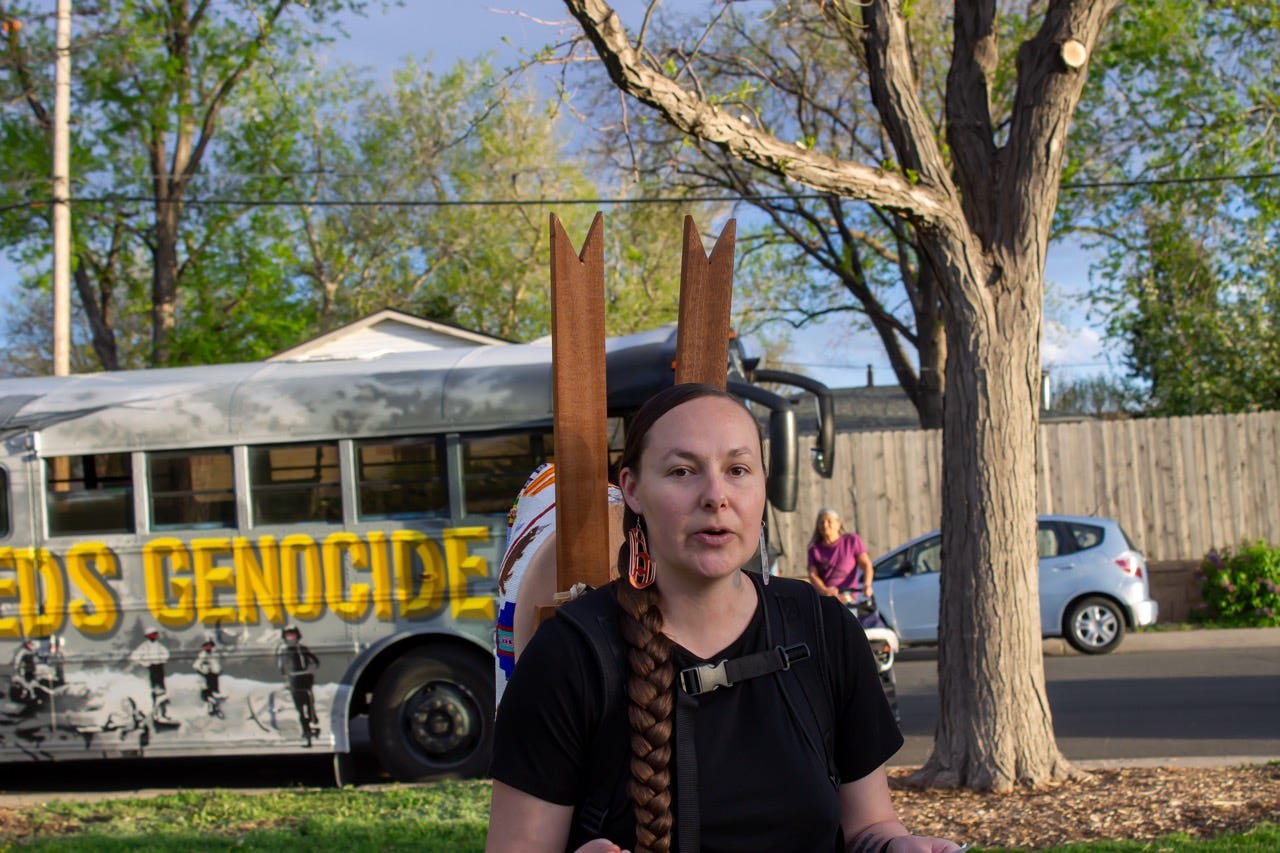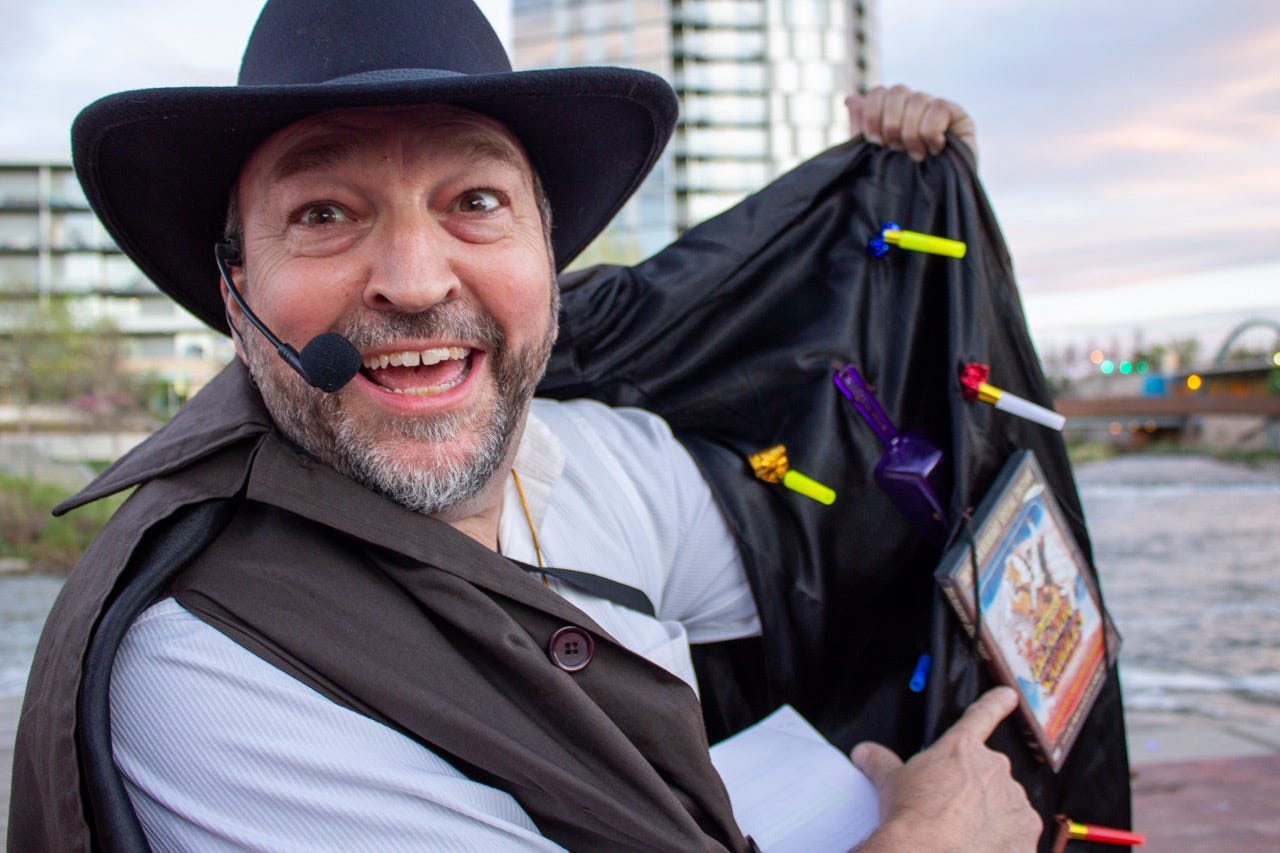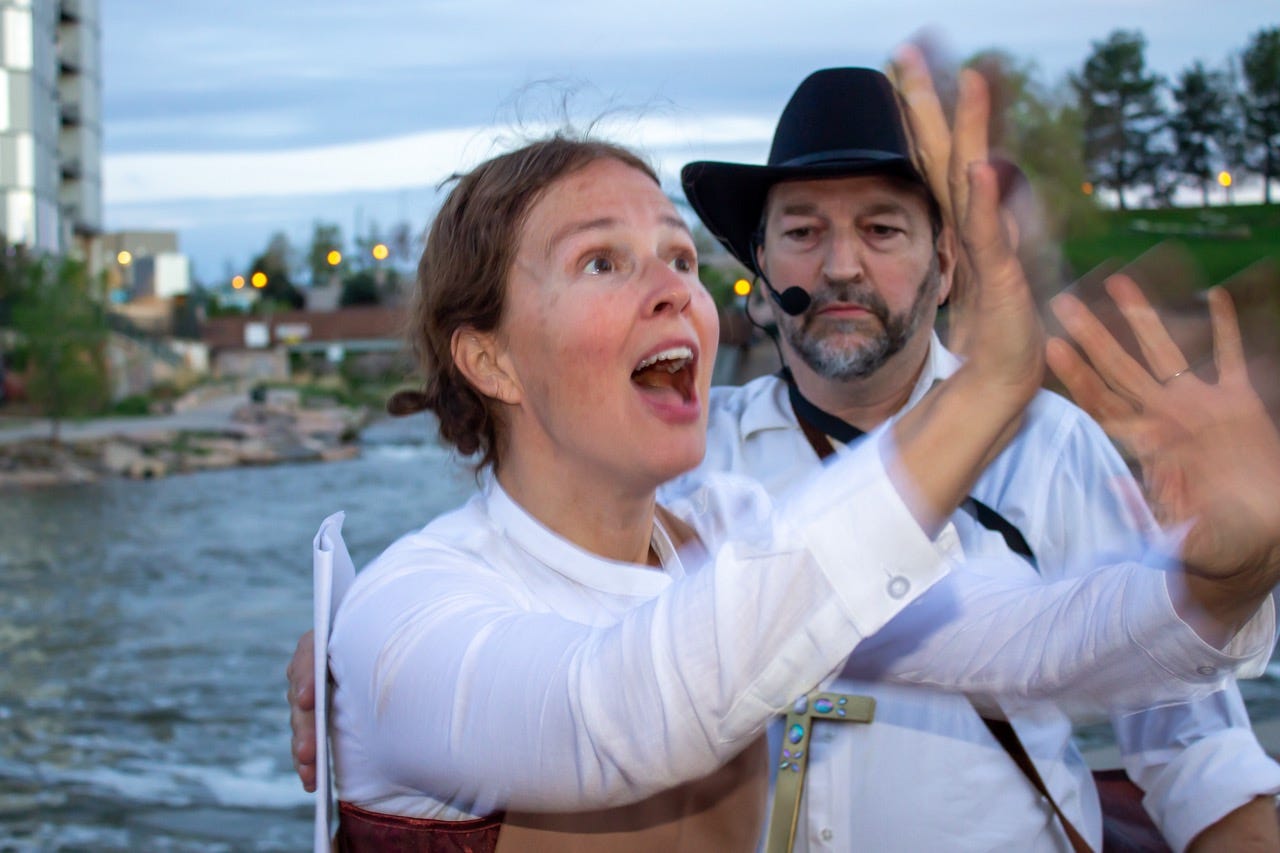Feeling The Past To Heal It: ‘Breathing Healing into the Banks of Sand Creek’ (REVIEW)


Cinnamon Kills First & Control Group Productions collaborate to confront one of Denver’s deepest historical sins
Sometimes immersive works come to us with risky content and audacious goals that reach beyond pure entertainment. Sometimes (more often than not, if I’m being honest) those works aim high, but ultimately fall flat. So when I read that the latest from Control Group Productions would be “an immersive expedition for white audiences into the history and present-day impact of the Sand Creek Massacre” I grimaced a little and feared it was heading for similar territory.
But boy, was I wrong.
Key to making it safe to explore such sensitive subject matter in such a provocative way is the fact that this show was designed by Cinnamon Kills First, a direct descendant of Sand Creek Massacre survivors. A culmination of their creative work and somatic training, the show invites audiences to “face, feel, reckon, release and heal from ancestral moral crimes.”
How did we achieve that in under three hours in the company of total strangers? By riding on Control Group’s retrofitted bus to visit five different locations in the Denver metro area that played a significant role in the course of events leading up to, and following, the Sand Creek Massacre. At each site, we listened to monologues, watched or participated in reenactments and yes, even played a few games.
Notably, Breathing Healing puts its audience members in the antagonistic role of a soldier who volunteered for the 1864 cavalry, which was sanctioned by Colorado Territorial Governor John Evans to legally murder “hostile indians.” This crucial casting choice made it authentically personal for every non-native person in the audience and created much internal dissonance as we were asked to exhibit and uphold the white supremecist views of the time. Paired with the weight of standing upon the same (stolen) ground where the historical events in the story took place, the experience was sad, heavy and introspective.
Which is exactly what Cinnamon Kills First was going for — a gentle, yet direct and intentional provoking of thoughts and feelings about the truth of our white ancestors’ despicable behaviors. As we rode on the bus to each new location, a taped somatic meditation from Kills First was played, asking us to lean into the reactions and emotions we felt at the previous stop. We were challenged to, for example, “Notice what you are feeling in your body now as you reckon with the fact that you are appropriating Indian land for your own use,” or to “Think about how living native descendants feel today with ongoing occupation.”

Our tour began at Denver’s Confluence Park (named so for the confluence of the Cherry Creek and South Platte waterways) where we met Bill Tall Bull, a member of the Cheyenne and Arapaho Tribes of Oklahoma. “Colorado prides itself on being a culture of leave no trace. Is this leave no trace to you?” he asked as he pointed out the noise from traffic, buildings scraping the sky, and smells wafting from the South Platte. Tall Bull told us about the 1851 Horse Creek Treaty that makes Denver an illegal settlement, as well as the John Evans Proclamation (which was only just rescinded in 2021) that allowed white people to kill any Indian they deemed hostile, and then steal their belongings.
Next we went to Camp Weld where Cheyenne and Arapaho delegates met with Colorado State and military officials to negotiate peace less than three months before the massacre would occur. As the bus stopped in a seedy, industrial stretch of town right off of I-25, we exited to find Tall Bull sitting atop a tall stone monument with a Camp Weld placard. From his vantage point, Tall Bull narrated as the rest of the cast acted out the negotiations, which amounted to squeezing the Indians for intel, then sending them on their way, reassured by a peace treaty that the colonizers had no intention of keeping.
Get Danielle Riha’s stories in your inbox
Join Medium for free to get updates from this writer.
SubscribeSubscribe
Mercifully, the production made no attempt to reenact or depict the massacre. Instead, we listened to a taped recounting of the gruesome details on the ride between stops two and three. When the bus stopped again, we stepped onto Denver’s iconic Larimer Square where the city once gathered to hold a parade celebrating the soldiers who returned from murdering peaceful Indians in the massacre. Breaking character, our colonel turned to us and said, “We’re going to stop performing at you for a minute and support you through a hard thing that we are inviting you to participate in.” With rattles in our hands and sorrow in our hearts, we walked down the historical block (which was full of day-drinking pedestrians with their phones pointed at us) moving our bodies and making sounds in an effort to “reclaim and transform” the space.
Our final destination was just a few blocks away, so we headed there on foot. Stopping in front of an average, nondescript office building in the heart of downtown Denver, we stood before another historical marker: the site where Silas Soule was shot by two of his fellow soldiers after he testified against our colonel (Chivington) for his role in the Sand Creek Massacre. Here we learned about Soule’s life, including his work on the underground railroad and negotiations to harmoniously with the natives. We reenacted the shooting and held a short memorial for Silas before boarding the bus to return to our starting point.

While the somatic elements of the show did little for me personally (i.e. meditating on how my body feels or reacts in response to different prompts), hearing Kills First talk so bluntly and directly about the tragic history of her ancestors, which occurred at the hands of my own ancestors, did plenty. As Kills First told us in one of the meditations, “We are not our ancestors, but we inherit their trauma. It’s our job in the present to heal [because] our descendants deserve a healthier world.”
Whether someone was born and raised in Colorado or moved here as an adult, most Denverites are familiar with, to some degree, the tragic story of the Sand Creek Massacre. And most, if not all, understand on a surface level what an atrocity it was… but rarely, if ever, have we taken steps to truly face and feel the weight of our ancestors’ actions. To steep in those feelings (instead of bypassing them entirely, as society teaches us to do) is to override and reset the bias and racism we all inherited — the aforementioned lofty goal of this production.
Without the guidance of Kills First’s meditations, and without going to the physical spaces where the events happened, I don’t believe the desired reckoning would have been possible. I’m not even sure that reckoning can be fully realized in the course of a 2.5 hour immersive production, but I am sure that this experience has vastly enriched not only my understanding of the events that occurred, but also the impact that it is still having today on the indigenous people of our country.
As a rule, relieving someone else’s trauma is generally not my preferred application of immersive theatre. And while we, the audience, had no agency in the story, we were certainly at the center of it, and ultimately at fault for the brutal slayings of over 200 Indians. That’s a heavy load to bear, and a wildly different role than the hero character we are more commonly asked to play in immersive works. That essential contextualization was the genius of this show that made it clear that we were not there to play; we were there to heal.
As was oft repeated throughout the experience: You’ve got to feel it, to heal it.
Breathing Healing into the Banks of Sand Creek from Cinnamon Kills First & Control Group Productions runs through May 19, 2024 in Denver, CO. Tickets are $38 — $75
Discover the latest immersive events, festivals, workshops, and more at our new site EVERYTHING IMMERSIVE, home of NoPro’s show listings.
NoPro is a labor of love made possible by our generous Patreon backers. Join them today and get access to our Newsletter and Discord!
In addition to the No Proscenium website and our podcast, and you can find NoPro on Facebook, LinkedIn, YouTube, Instagram, and in the Facebook community also named Everything Immersive.